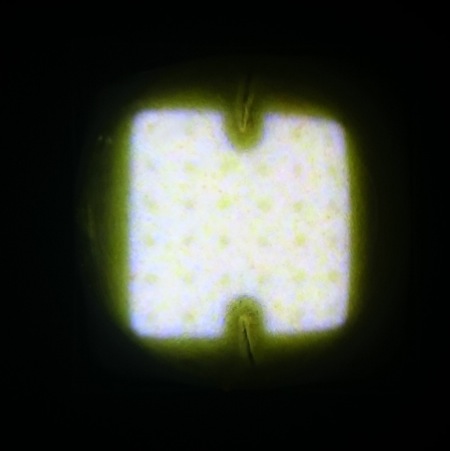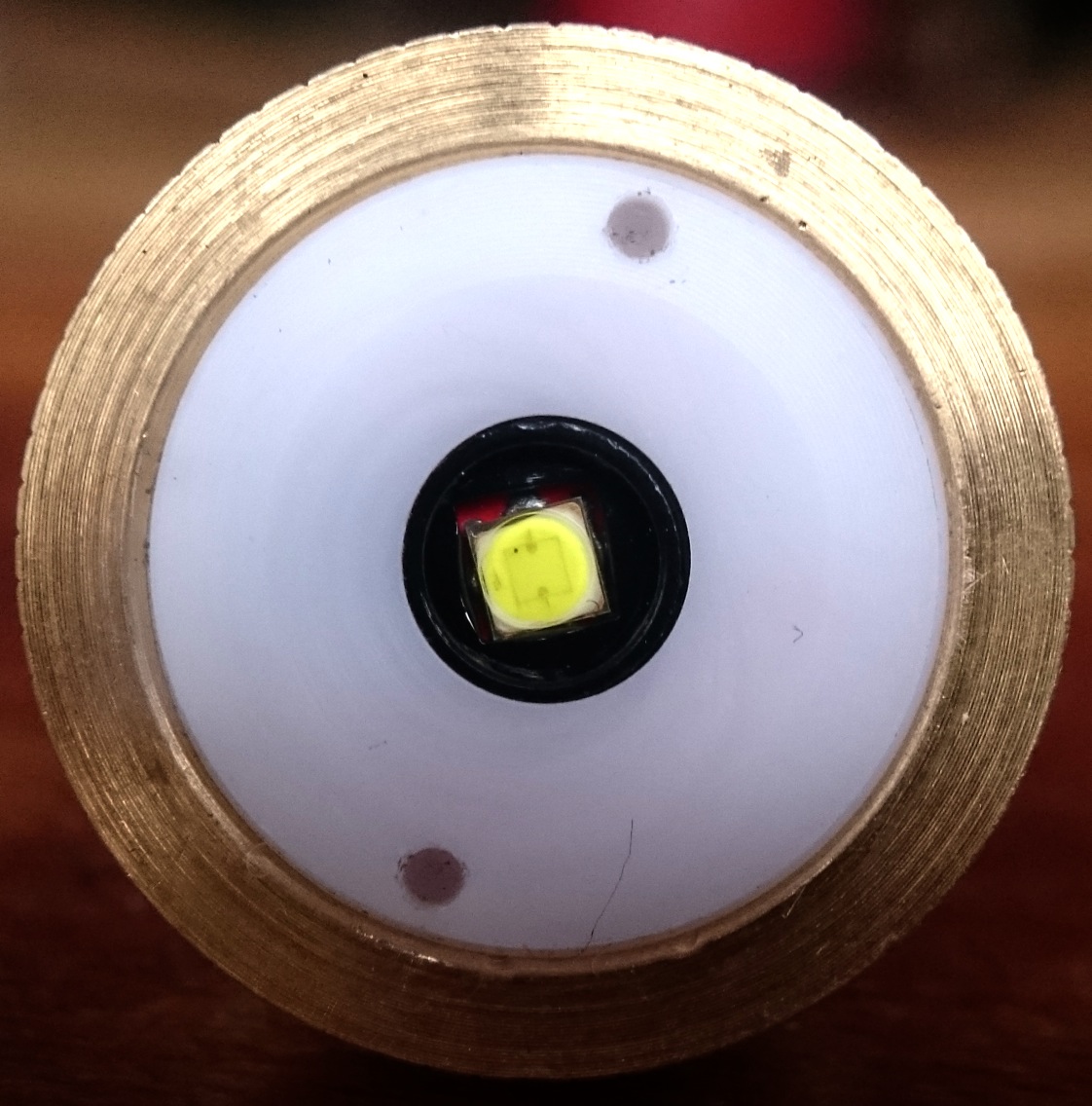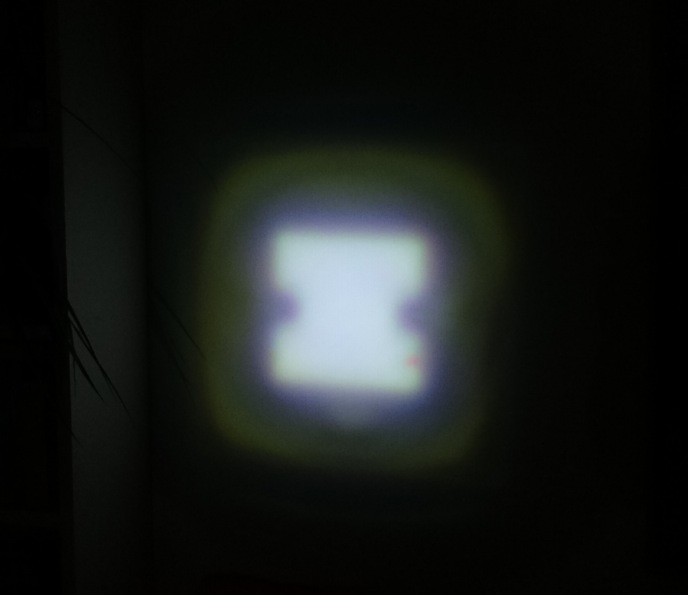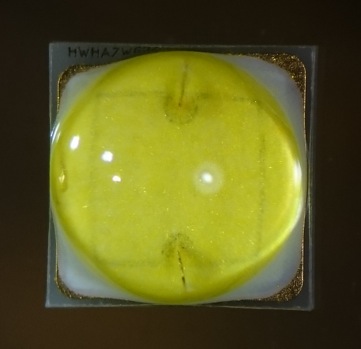
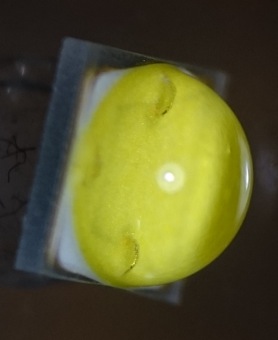
The third generation Osram Oslon Square has been for sale for a few months already, but (with my admittedly narrow view on the world) I have not seen it tested or used yet. It is not a Cree led so, apart from some interest on TLF which is how it was brought to my attention (chouster mentioned it to me), I have not seen it mentioned much... let's see if that is justified.
From rs-online I bought the minimum of 5 of them (for about $2.20 each so about XP-G2 price) , in 5000K 70CRI. Partnr. GW CSSRM2.PM-NPNR-A333-1 . RS-online has it in 3000K, 4000K and 6000K too, but I have not seen higher than 70 CRI variants for sale yet.
The appearance differs from the former generation Square in that the dome is significantly larger, and completely spheric instead of flattened on top. The size and shape of the dome is very close to the XP-G2 now (but the smaller 3030 package of the Oslons make it look a bit out of proportion). As with all the latest Oslons, the phosfor is a 'poor' over the die and its surroundings. Here's the 3rdgen. Oslon Square physically compared to an XP-G2, left the Square (under 0.5mA current to light up the die area), right the XP-G2 (not lighted):
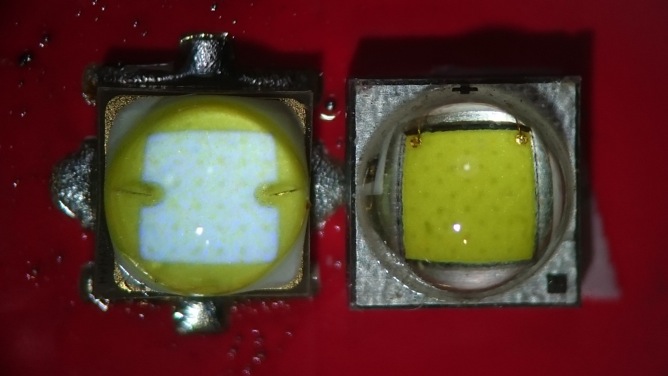
The die size is as good as the same too.
The test was done like all my more recent emitter tests. I described it in detail in my XP-L test. , with two minor differences that should not matter significantly for the results: I used my Integrating sphere no. II instead of no. I, and for the current I used a clamp meter, which appears to measure 0.1A lower than the power supply current-reading that I used before.
In summary: 1) just one led was tested, reflowed on a DTP copper board (XP-Noctigon 16mm) 2) I used my large version II integrating sphere with high quality luxmeter, 3) the output numbers and voltages were measured with the led close to 'steady state' for each current, so warmed up and settled, you should be able to get these numbers in a well heatsinked flashlight. Mind that these are output numbers of the bare led, in a flashlight there will be losses from light obstructions, lens and optic, 4) output is in 'djozz-lumen' defined as 1/550 of the output of my Sunwayman D40A on high setting, which I hope is close to the real lumen, but at least is consistent over all my emitter tests done in integrating spheres.
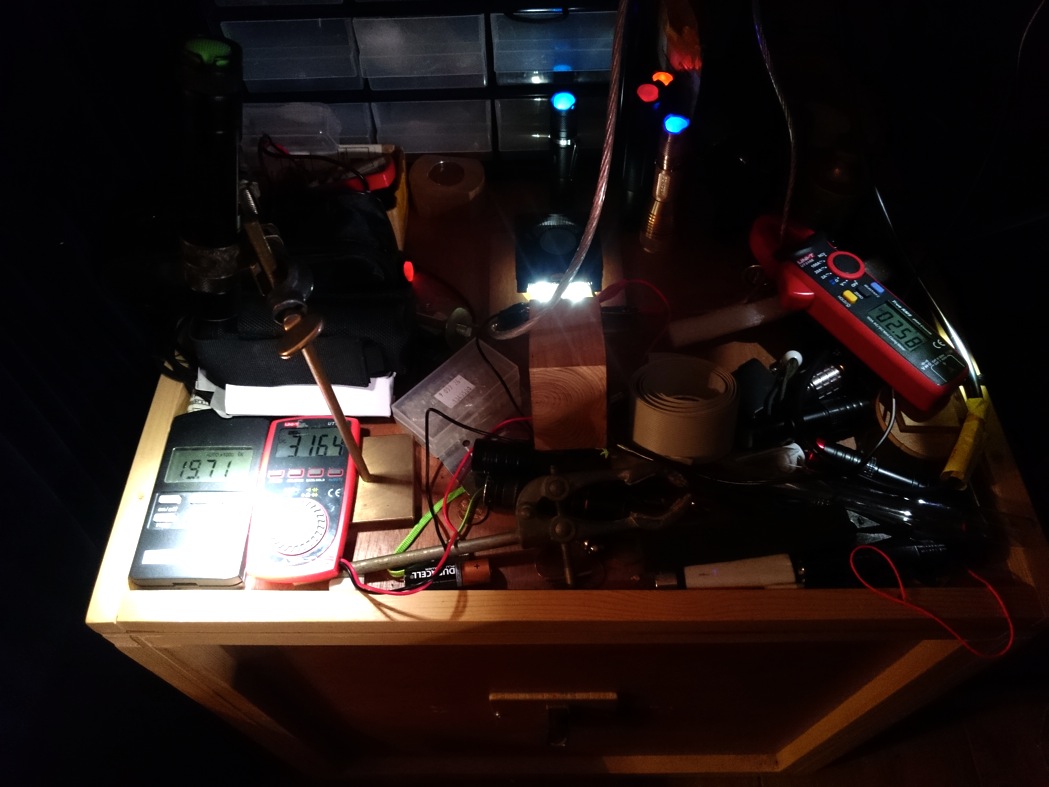
Here's the results, compared to several other leds that I have tested using the exact same method:

What can be said about the 3rd-gen. Oslon Square from this graph?:
*compared to the 2nd generation Oslon Square, the 3rd generation is thermally improved and has a bit lower voltage (0.15V lower at 5A). (the outputs of the 2nd and 3rd generation in this graph can not be compared because the tint and CRI are way different)
*compared to the led that comes closest in specs from what I tested, the XP-G2 S4 2B, it performs clearly better: above 3A the output is higher, the voltage is no less than 0.6V lower. This makes this led the best performing led in this die size class that I have tested sofar. A 70CRI Nichia 219C (not tested by me) may come very close though...
*the XP-L Hi has better output (tested is a U6 bin, and there's a V2 bin out there too so the output is even more then), but its voltage is a bit higher (0.2V at 5A).
*it maxes out at 7A, which is better than any of the leds with this die size, only the XP-L (Hi) has its maximum at a higher current (7.5A) but has a bigger die. (btw, the output dip of the XP-L Hi at 5,5A was caused by part of the die getting damaged during testing)
*the bond wires of the Square incinerated at 8.6A, which is comparable to what happens to the XP-G2, at least the old ones (the Nichia has no bond wires that can blow)
*the low voltage of the Square is only matched by the Nichia 219C, the latter being even lower at really high currents.
With this performance, beating the XP-G2 S4 2B, this is a very interesting led. But, as discussed in another thread on BLF, it is debatable what the advantage is of a XP-G size led with dome, now that there's the XP-L Hi that shows very similar optical properties with higher light output. On a single Li-ion cell, the Square may still show a similar light output as the XP-L Hi because of its lower voltage, but consequently at higher current.
This Square becomes increasingly interesting if it can be dedomed. I have never manged to succesfully dedome any Oslon, but had a go at a hot dedome anyway with the burnt test-led (hence the blackened bond wires in the pictures below). And of course failed:
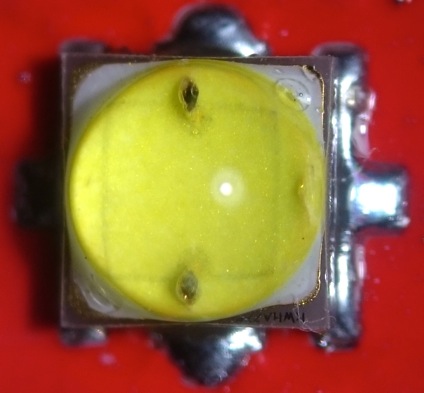

The dome comes off alright, but the phosfor appeared to be a sort of sludge, not solid at all like the Cree phosfor layers. Another approach could be slicing the dome, but because of the bond wires sticking out, a significant layer of silicone will have to be left over the die, this will not help the photon recycling needed to increase the luminance of the die.
edit: my first attempt at a test with shaved dome is in post #9
Conclusions
This 3rd generation Osram Oslon Square is a great performer, so much that Osram has 'overtaken' Cree in the XP-G class. It seems to perform even a bit better than the Nichia 219C. But the big drawback for high end flashlight use is that it can (sofar) not be dedomed to increase the luminance of the die, like the XP-G2. And with dome on, the Square has a strong competitor in the XP-L Hi, close to same optical properties with a bit higher output. It is much cheaper than the XP-L Hi though, so that may make it attractive to use instead (for swapping the leds in your 12-led SRK clone ;-) )
I have not evaluated the tint of this led, for that I need to build it into a flashlight and gain an impression. I may do that in the near future :-)
Thanks for reading!
